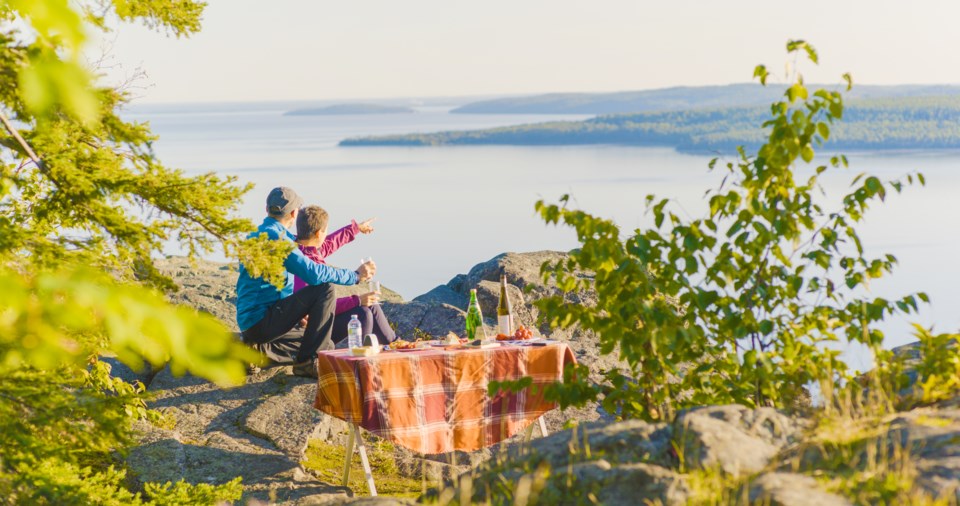It’s January 2020. News outlets caution of a new virus halfway across the earth, but for the most part, folks in Canada continue to carry out their daily routine. Families have vacations planned for the upcoming March Break and others are looking to head somewhere warmer and escape the winter months. Of course, we know how this story ends – Canadians are faced with cancelling travel plans in light of the COVID-19 pandemic. With changes in pandemic restrictions, many Ontarians are looking to their own backyard for travel oppourtunities. Notably, these changes in tourist travel have had some important implications for the tourism industry in Northern Ontario.
Why travel has changed
Recent research by Karl et. al (2021) from the Annals of Tourism Research suggests that not only how we travel has changed, but why we travel has also changed. Karl et. al suggest that, increasingly, travel amongst individuals during the pandemic has not been about the destination, but rather about who is at that destination: family and friends. In other words, travellers are less motivated to travel to a place, but rather are travelling for connections with other people. However, seeing loved ones is not the only factor influencing travel. Currently, perception of risk also plays an important role in traveller decision-making.
Unsurprisingly, tourists are increasingly looking for “isolation experiences” that allow them to travel or take part in experiences with their own social bubble, positioning outdoors travel experiences as paramount during the pandemic. More and more, folks are turning to the great outdoors for travel experiences – full campgrounds, busy marinas and high traffic on snowmobile trails are just a few examples of the increased interest in outdoor tourism. On the flip side, urban tourist experiences are struggling due to a loss of festivals, concerts, conferences and sporting events.
How tourism operators adapted during the pandemic
It’s no surprise that the tourism industry, like many other industries, has experienced a loss as a result of the pandemic. As David Maclachlan, Executive Director Destination Northern Ontario notes, “The pandemic continues to have a negative impact on tourism industry, an important industry that was affected first, hardest, and will take the longest to recover.” As a result, many tourism operators have had to adapt their businesses by both pivoting their marketing to focus on more local travellers and changing their operations.
We see it at local restaurants – increased sanitation practices, decreased customer capacities or moving from dine-in to curbside pick up. Similar practices have been implemented at various lodges and resorts in Northern Ontario, where they have enhanced their cleaning policies to ensure a higher standard, particularly focussing on high touch points.
As Maclachlan comments, “cleaning and sanitation costs are rising, and businesses are reopening with additional operational regulations to protect both employees and customers. Customer capacities are reduced due to social distance restrictions, leaving pre-pandemic square footage equations irrelevant.”
A look at the future
The future of tourism in Northern Ontario is out there – literally. Outdoor adventure tourism is becoming increasingly popular as tourists are looking activities they can enjoy while practicing social distancing. Progressively, individuals are looking to reconnect with nature. Research also suggests that older Generation Z’ers (individuals aged 6-25 years old) are emerging as key travellers, as younger individuals are more likely to travel farther compared to an older demographic.
Globally, focus has been given to establishing “travel corridors” or “travel bridges”, referringferring to areas with little to no active COVID-19 cases. These travel corridors will help create safer travel experiences and are expected to play a role in where people travel both within Canada and abroad (for example, travel between Canadians and other locations with lower instances of COVID-19 such as New Zealand, the Cook Islands and Singapore). While some travellers are missing luxury travel experiences, others are embracing the slower pace in their daily lives – a forced “stop and smell the roses” moment, if you will. While this might sound cliché, a slower pace might just be what we need, and hopefully will be a long-lasting legacy of the pandemic. The tourism industry is still very much in mitigation mode with recovery expected to start in 2022.
For more information on tourism in Northern Ontario, check out Destination Northern Ontario.
About Destination Northern Ontario (DNO)
Destination Northern Ontario is one of 13 not-for-profit regional tourism organizations funded by the Ontario Ministry of Heritage, Sport, Tourism and Culture Industries. We are the largest tourism region in geography, the second largest in expenditure and the only region that includes sub-regions.
Our Vision:
Northern Ontario will be a unique and distinctive tourism destination wherein high-quality products and experiences resonate with consumers, entrepreneurship is valued, and tourism provides local, regional and global connections for the entire region. Destination Northern Ontario will take a leadership role to strategically guide and champion growth in Northern Ontario’s tourism industry, through strong communication, collaboration and partnerships with industry.
For more information on Destination Northern Ontario, please visit: www.destinationnorthernontario.ca. Follow us on Twitter or on Facebook for the most up-to-date news and information.
